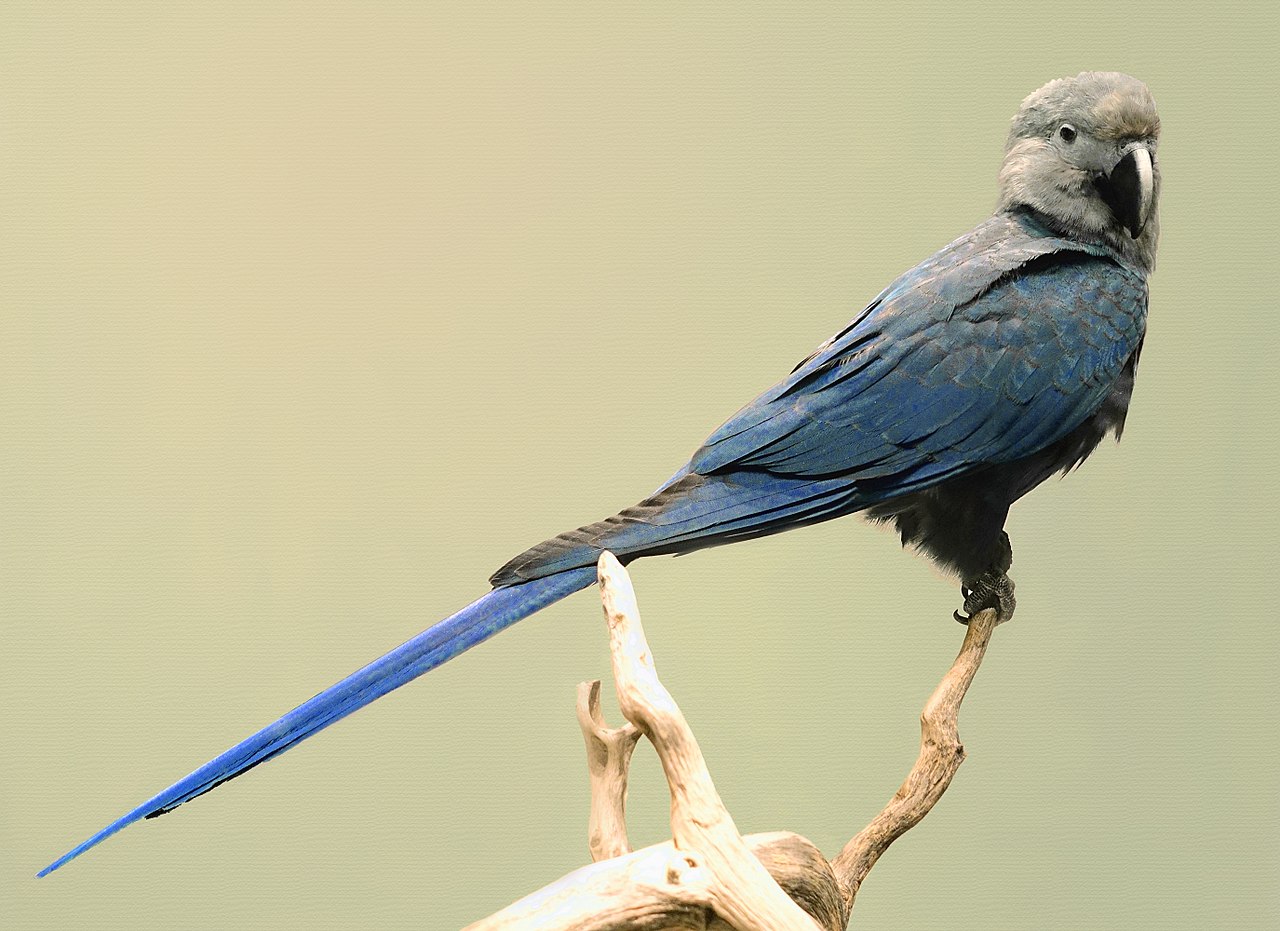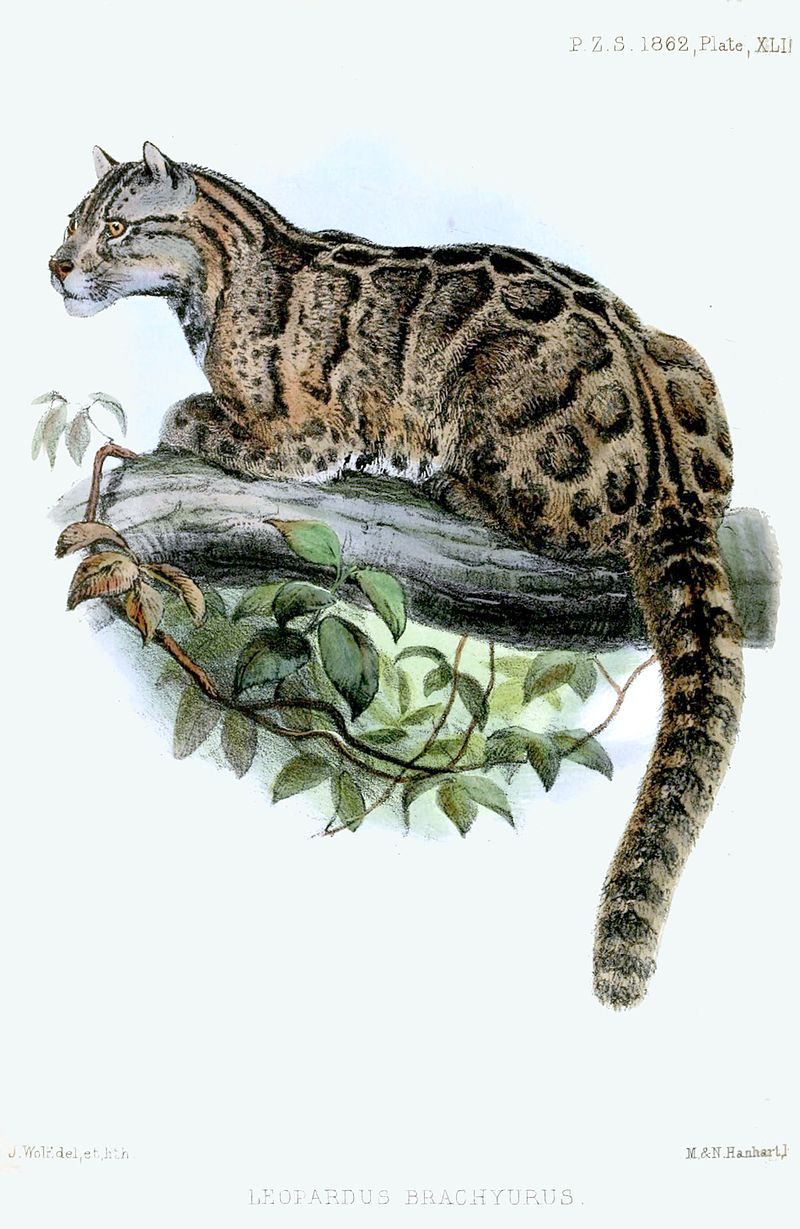- Forest Insights
4 Species That Went Extinct This Century Because of Forest Loss

Picasa
Scientists have a better understanding of the number of stars and galaxies in the universe than the number of species currently on earth. A little more than 1.7 million species have been described by science and estimates of the total number of species on earth vary wildly between 3 and 100 million. Yet each year this staggering amount of diversity takes a hit.
Research suggests that Earth is currently experiencing its sixth mass extinction. (The last extinction took out the dinosaurs 66 million years ago). The rate of loss today is estimated to be between 1,000 to 10,000 times higher than the natural background rate.
 Illustration of a Formosan Clouded Leopard from 1862. Joseph Wolf/Zoological Society of London.
Illustration of a Formosan Clouded Leopard from 1862. Joseph Wolf/Zoological Society of London. Habitat destruction and degradation, inflicted as humans expand our activity further into the last wild places, is a powerful engine for extinction. As forest loss marches along, it carries alongside it the possibility of extinction for hundreds of species that depend on narrow slices of forest habitat for survival. Since the start of the century, the International Union for the Conservation of Nature (IUCN) has declared 665 species either completely extinct or extinct in the wild. Here are four forest-dependent species that have vanished due to habitat loss in the last 20 years.
Formosan Clouded Leopard
(Neofelis nebulosa brachyura)
This big cat found only on the island of Taiwan, a subspecies of the slightly larger clouded leopard found throughout Asia, was declared extinct in 2013. The second largest carnivore on the island after the Formosan black bear (listed as vulnerable by the IUCN), the leopard’s extinction was likely caused by the loss and fragmentation of lowland forests on the island, replaced by agriculture, forcing the cat up into ever smaller ranges at higher elevations.
According to Global Forest Watch (GFW) data, Taiwan lost 37,100 hectares of tree cover since the start of the century, with a large spike in 2009. Illegal logging and poaching of endangered tree species has posed a consistent threat to the island’s primary forests.
Two unconfirmed clouded leopard sightings were reported in 2018. One group of rangers reportedly saw the cat darting out of the way of a scooter before running up a tree and another group thought they saw one hunting goats on a cliffside. The last official sighting of the leopard was in 1983.
 The only remaining Spix’s Macaws are in captivity. Rüdiger Stehn/Flickr
The only remaining Spix’s Macaws are in captivity. Rüdiger Stehn/Flickr Spix’s Macaw
(Cyanopsitta spixii)
This dusty blue bird earned popular attention for inspiring the characters in the 2011 animated film, Rio. In reality, the Spix’s Macaw is the rarest parrot species in the world, and completely extinct in the wild.
These macaws were native to the arid lowland forests in the interior and northeast of Brazil. Research determined that a species of tree (Tabebuia caraiba) was critical to the birds habitat, with one study noting that where these trees had been cleared, the macaw had disappeared. Habitat loss due to agriculture, combined with illegal trapping for the pet trade, is theorized to have led to their decline. A 1990 search found only one site with conclusive evidence of Spix’s Macaws living in the state of Bahia, and in 2018 they were declared extinct. It is estimated that between 60 and 80 individuals are still alive in captivity.
Mount Glorious Torrent Frog
(Taudactylus diurnus)
Amphibians are highly susceptible to extinction, with one in three amphibian species listed on the IUCN’s endangered species list. The Mount Glorious Torrent Frog, a small diurnal frog native to just three mountain ranges on the eastern coast of Australia, was one of the early amphibian casualties. Although considered relatively common in the 1970s, the frog experienced a sharp decline and was declared extinct in 2004.
The Mount Glorious Torrent Frog inhabited mountain rainforest streams and could be found hopping about in the leaf litter and vegetation near the water. One single cause of the frog’s extinction hasn’t been identified, but logging in the watershed and upstream is hypothesized to have had an impact. The area comprising the frog’s estimated range lost 11,100 hectares of tree cover since the start of the century. Based on the rapid decline pattern, an infectious chytrid fungal disease could also have played a part.
Cryptic Treehunter
 The larger Cryptic Treehunter (center) compared to individuals of a similar species. Barnett and Buzzetti (2014)
The larger Cryptic Treehunter (center) compared to individuals of a similar species. Barnett and Buzzetti (2014) (Cichlocolaptes mazarbarnetti)
This small bird, as the name suggests, defied discovery for years, often getting mistaken for other similar-looking species. When it was finally identified by scientists in two tiny patches of humid Atlantic forest in Brazil in 2014, the treehunter was already critically endangered. Intensive studies of the area estimated at most 10 breeding pairs existed in 2004, and that the population in 2014 was likely even lower, making it one of the world’s rarest birds. By 2019 the IUCN had declared them extinct.
The region of eastern Brazil where the Cryptic Treehunter was found has seen widespread tree cover loss due to shifting agriculture. Forests became highly fragmented and converted to sugarcane plantations and pastureland, which lead to a decline in the bromeliad species this bird specialized on for nesting.
These species are just a few of the hundreds that have been lost in the last two decades alone, and there are likely countless others that are slated to join them. Extinction due to habitat loss can sometimes be delayed, as individuals continue to exist even though the necessary resources and habitat have dwindled past the point of supporting a viable population. This “extinction debt” means that there could be many more species that are already dead in the water (or the forest), unless we are able to rapidly reverse the damage done to their habitats. The Alliance for Zero Extinction has identified areas of habitat critical to the survival of endangered species. To monitor tree cover loss in these areas visit GFW.


